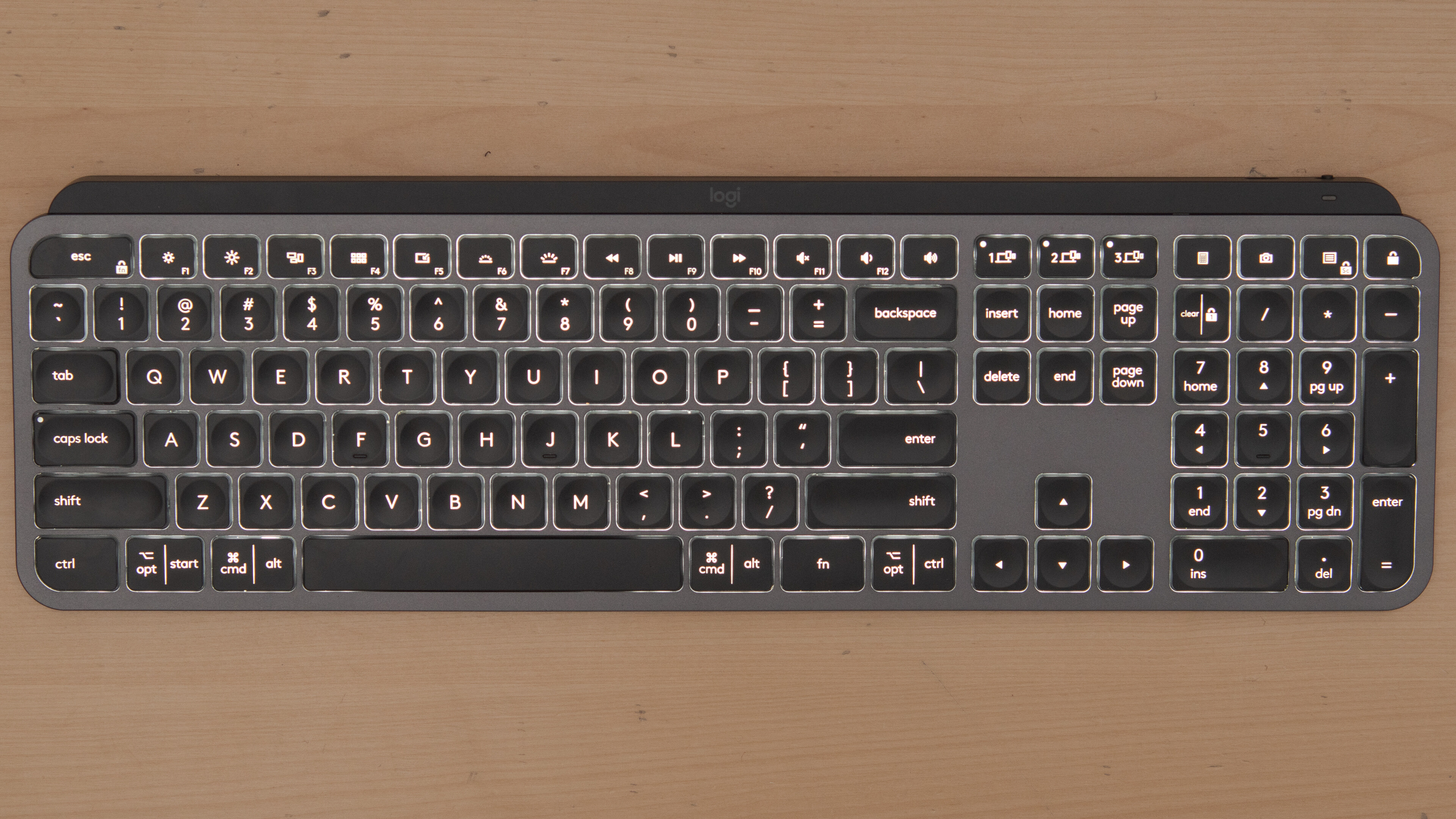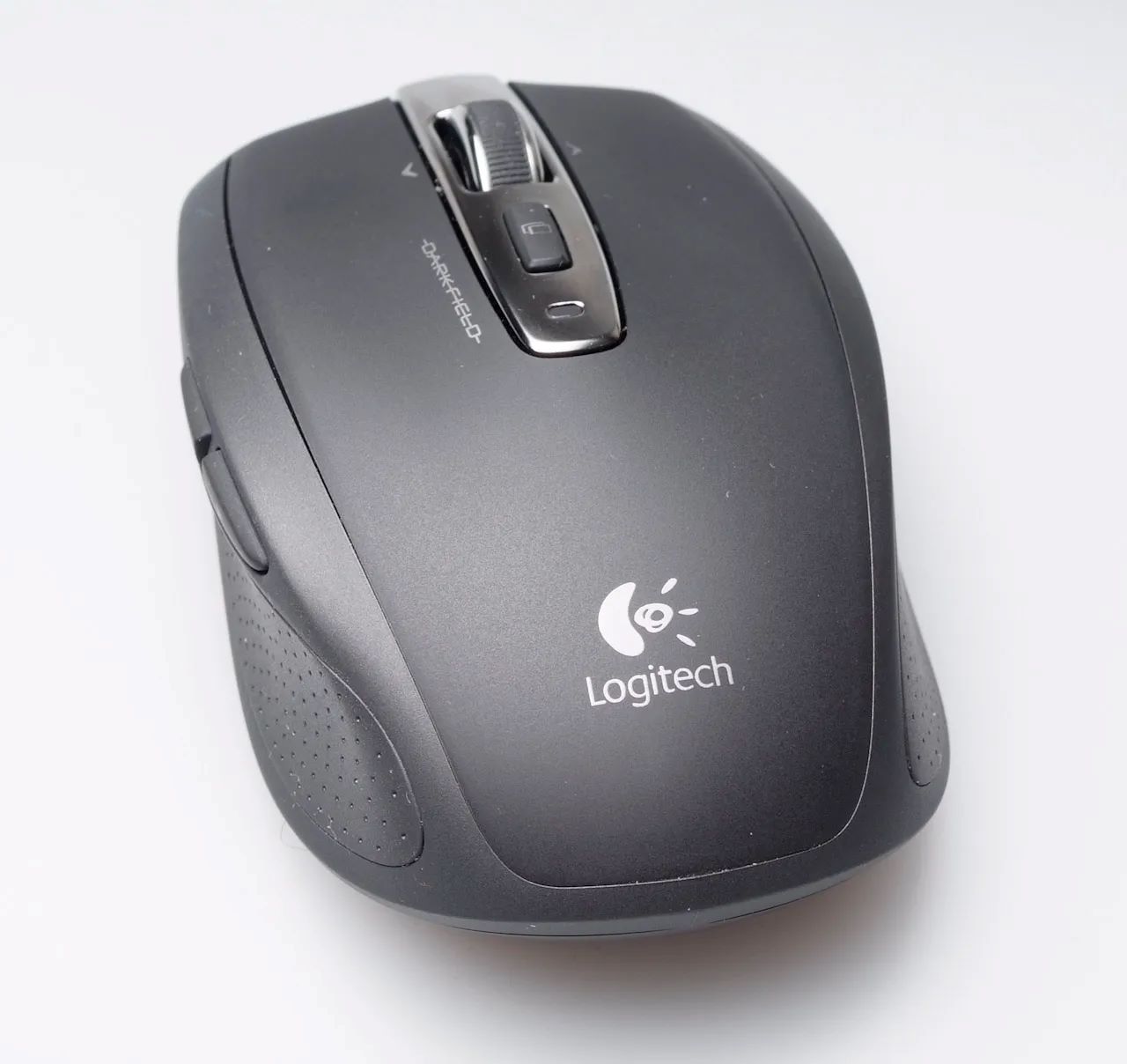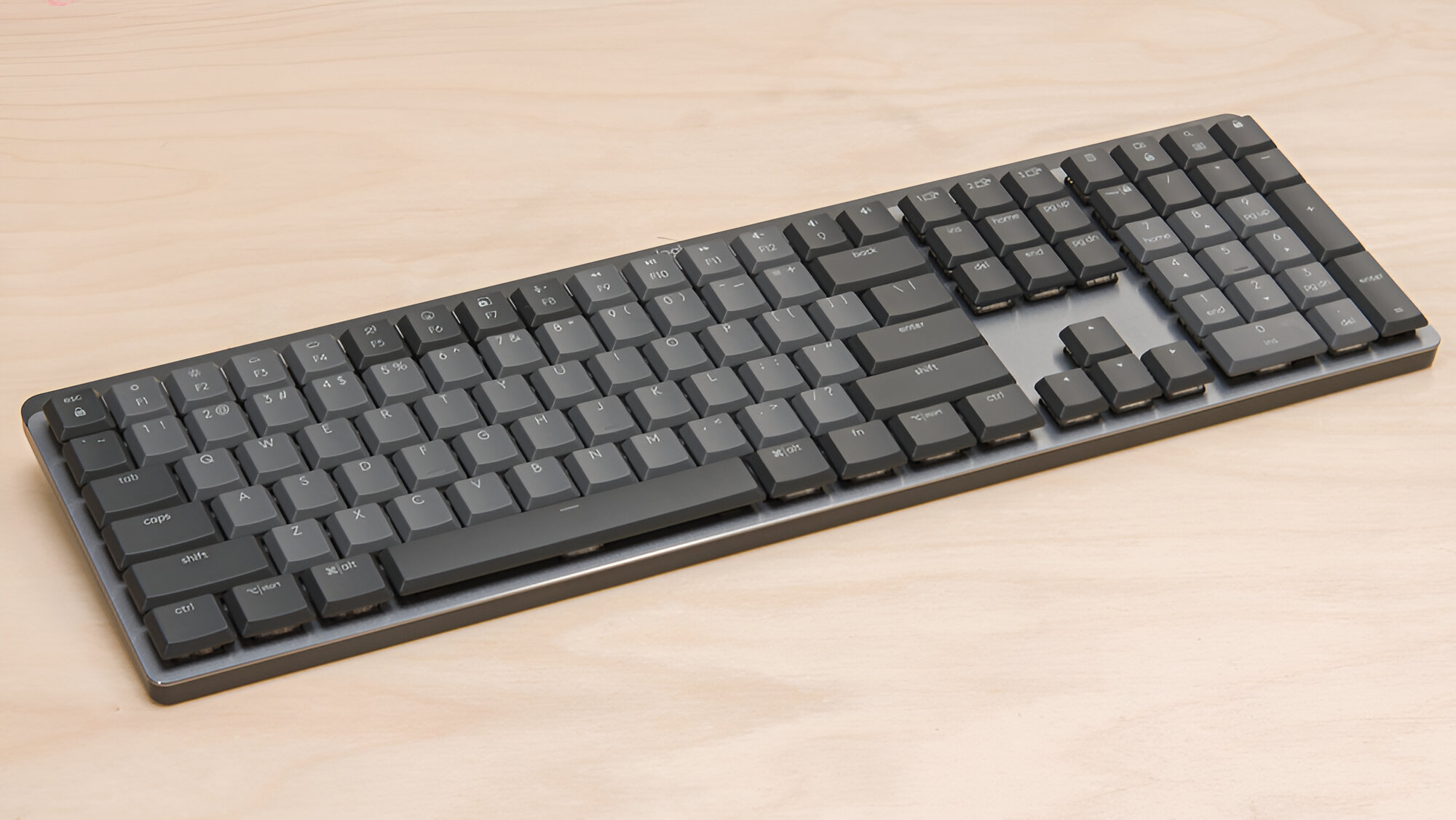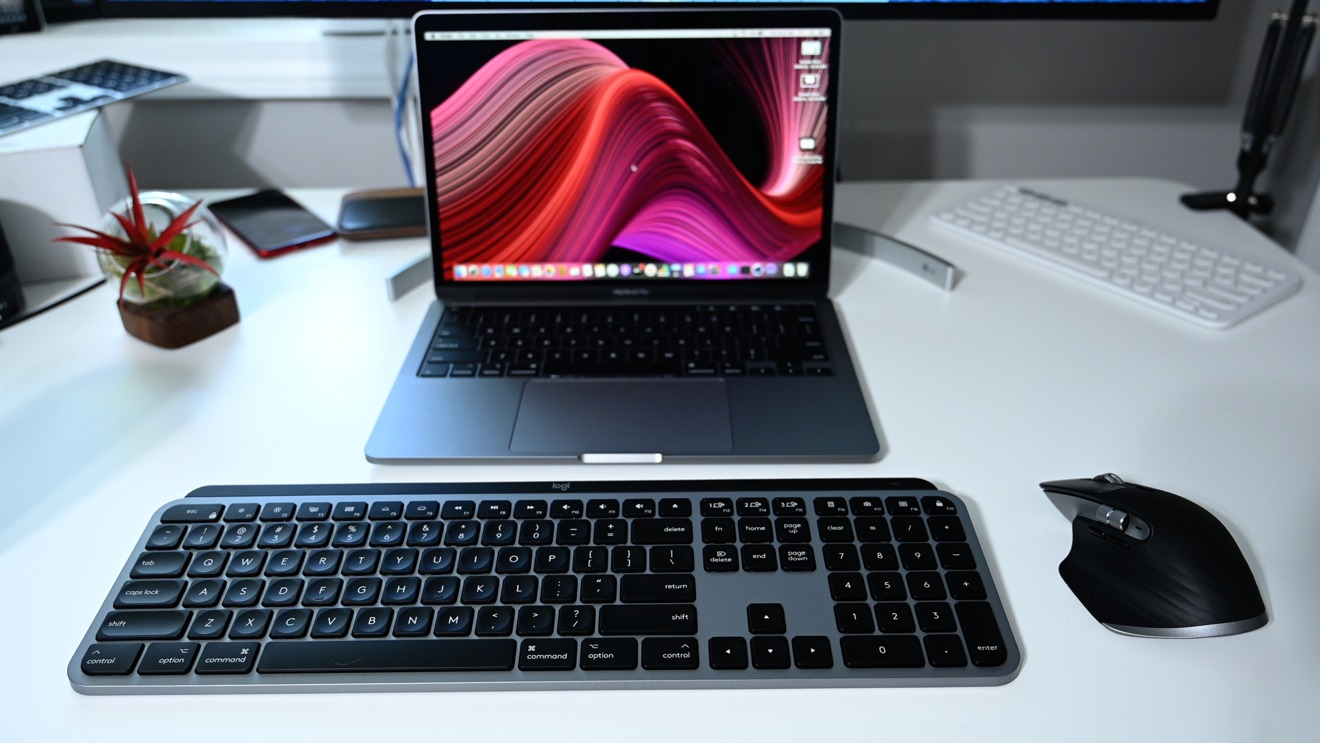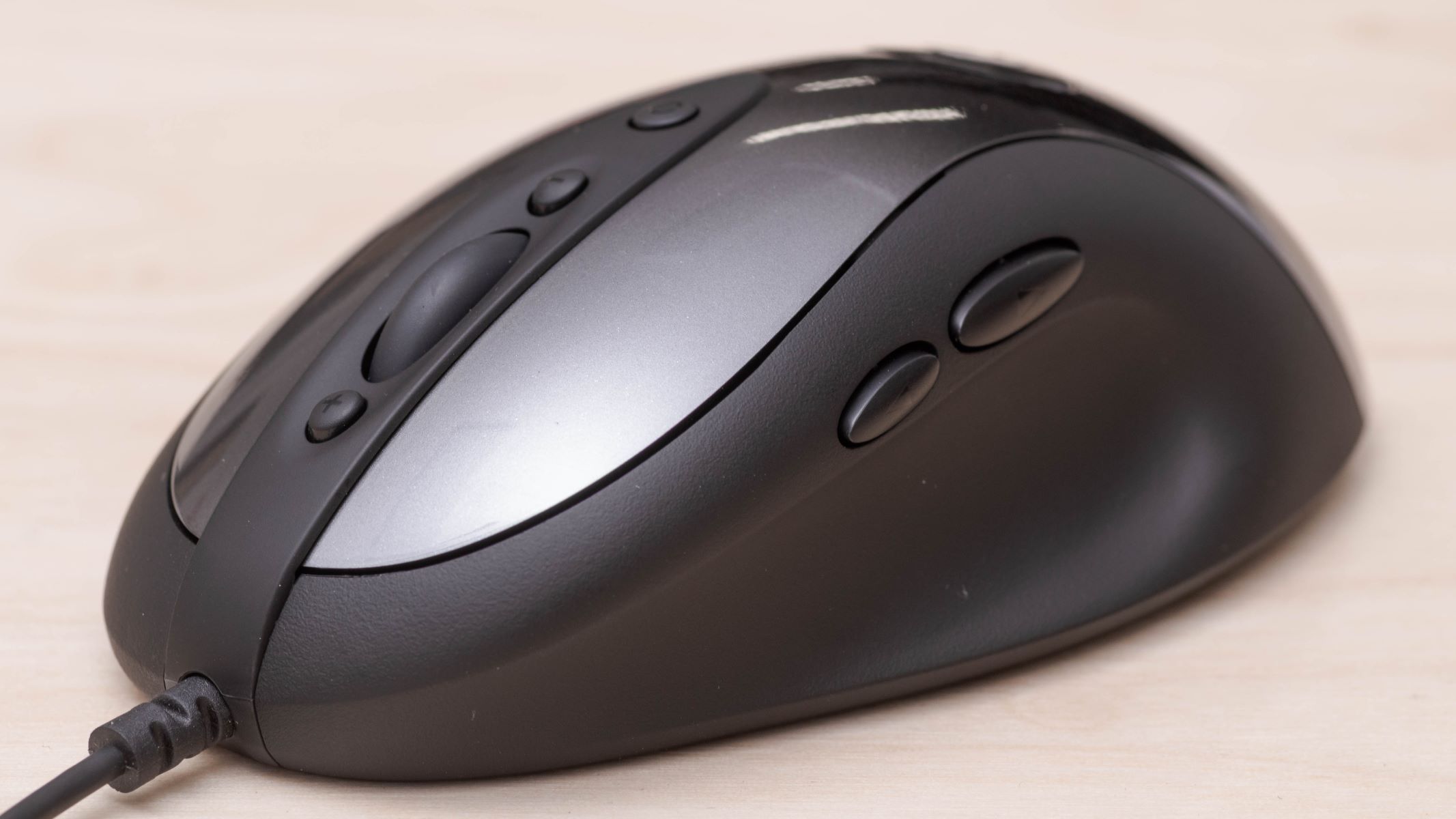Introduction
The Logitech MX Keys is a versatile and high-performance keyboard designed to enhance productivity and streamline your workflow. One of the standout features of the MX Keys is its function keys, which provide quick access to a range of useful shortcuts and commands.
In this article, we will explore the various ways to make the most out of the function keys on the Logitech MX Keys. Whether you’re a power user or simply looking to improve your efficiency, learning how to utilize these keys effectively can greatly enhance your overall typing experience.
Before we dive into the specifics, let’s take a moment to understand what function keys are and how they work. Function keys, typically labeled as F1 to F12, are a row of keys located at the top of the keyboard. These keys have predefined functions but can also be customized to perform specific actions based on your needs.
Customizing your function keys allows you to personalize your keyboard to suit your workflow, making it easier to access frequently used commands and shortcuts. Whether you want to streamline your multitasking capabilities, control media playback, or navigate through applications effortlessly, the MX Keys has got you covered.
Throughout this article, we will explore the default function key shortcuts, as well as the versatility and functionality each key brings. We will cover productivity shortcuts, media control commands, communication functions, and system control options. By the end of this article, you’ll be equipped with the knowledge and tools to unleash the full potential of your Logitech MX Keys.
If you encounter any issues with your function keys or need assistance troubleshooting, we will also provide some helpful tips to address common problems. So, without further ado, let’s dive into the world of Logitech MX Keys and explore the endless possibilities these function keys have to offer.
Understanding Function Keys
Function keys, often labeled as F1 to F12, are a row of keys located at the top of your Logitech MX Keys. These keys have specific functions assigned to them by default, but they can also be modified to perform custom actions based on your preferences.
By default, the function keys on the MX Keys serve a variety of purposes, from adjusting volume and brightness to opening specific applications. However, the true power lies in the ability to customize these keys to suit your individual needs.
To understand how to make the most of the function keys on your MX Keys, it’s important to familiarize yourself with the default functions of each key. The functions may vary depending on the operating system you are using, but here are some common default shortcuts:
- F1 – Help and support
- F2 – Renaming selected files or folders
- F3 – Opening a search or find function
- F4 – Opening the address bar in a web browser
- F5 – Refreshing a web page or document
- F6 – Switching focus between different elements on the screen
- F7 – Opening the spelling and grammar check in a document
- F8 – Playing or pausing media playback
- F9 – Activating the special functions of the keys, such as multimedia controls
- F10 – Opening the menu bar in a selected application
- F11 – Enabling or disabling full-screen mode
- F12 – Opening the developer tools panel in a web browser
Understanding these default functions provides a solid foundation for customizing the function keys to better suit your specific needs. Whether you’re a programmer, writer, designer, or simply want to enhance your overall productivity, customizing these keys can dramatically improve your workflow.
Keep in mind that the process of customizing the function keys may vary depending on your operating system and preferences. Some common methods include using specific software provided by Logitech or utilizing the built-in keyboard settings within your operating system.
In the following sections, we will explore the different ways you can customize the function keys on your MX Keys to boost productivity, control media playback, communicate efficiently, and have better control over your system. So, let’s dive into the exciting world of customized function keys on the Logitech MX Keys!
Customizing Function Keys
One of the greatest advantages of the Logitech MX Keys is the ability to customize the function keys according to your specific preferences. By customizing these keys, you can streamline your workflow and access frequently used commands and shortcuts with just a press of a button.
There are various methods available to customize the function keys on your MX Keys, depending on your operating system and personal preferences. Logitech provides user-friendly software, such as Logitech Options, which allows you to easily customize the key assignments and create unique profiles for different applications.
Here’s how you can customize the function keys on your Logitech MX Keys:
- Install Logitech Options: If you haven’t already, download and install the Logitech Options software from the Logitech website. This software provides a simple and intuitive interface to customize your keyboard settings.
- Open Logitech Options: Launch the Logitech Options software on your computer, and make sure your MX Keys is connected and recognized.
- Select your MX Keys: In the Logitech Options software, locate and select your MX Keys from the list of connected devices.
- Customize key assignments: Navigate to the Function Keys tab within the Logitech Options software. Here, you can assign specific functions, shortcuts, or application launches to each function key according to your preference. You can also create different profiles for different applications, allowing you to switch between customized key assignments seamlessly.
- Apply and save your settings: Once you have customized the function keys to your liking, click the Apply button to save the settings. Your MX Keys will now use the customized key assignments whenever you use it.
By utilizing Logitech Options or similar software, you can take full advantage of the customization options available for the function keys on your MX Keys. This allows you to tailor the keyboard to your specific needs, maximizing your productivity and efficiency.
Whether you want to launch specific applications with a single keystroke, assign complex shortcuts for design software, or control media playback seamlessly, customizing the function keys on your MX Keys opens up a world of possibilities.
Keep in mind that the customization options may vary depending on your operating system and the software you are using. Explore the available options and experiment with different configurations to find the setup that works best for you.
In the next sections, we will explore the default function key shortcuts on the Logitech MX Keys, as well as the various ways you can use them to enhance productivity, control media, communicate effectively, and have better control over your system. So, let’s dive into the exciting world of function keys on the Logitech MX Keys!
Using the Default Function Key Shortcuts
The Logitech MX Keys comes with a range of default function key shortcuts that provide quick access to a variety of useful commands and functions. These shortcuts are designed to enhance your productivity and streamline your workflow, making it easier to perform common tasks with just a press of a button.
Here are some of the default function key shortcuts on the Logitech MX Keys:
- F1 – Help and support: Pressing F1 brings up the help and support documentation for your current application or operating system. It can provide useful information and troubleshooting tips when you need assistance.
- F2 – Renaming selected files or folders: When you have a file or folder selected, pressing F2 allows you to quickly rename it without the need for additional clicks or right-clicking options.
- F3 – Opening a search or find function: Pressing F3 opens a search or find function within the active application or the operating system, allowing you to quickly search for specific content or navigate through documents or web pages.
- F4 – Opening the address bar in a web browser: When using a web browser, pressing F4 focuses on the address bar, enabling you to quickly type in a new URL or perform a search without the need for using the mouse.
- F5 – Refreshing a web page or document: Pressing F5 triggers a refresh action, reloading the currently active web page or document. This is particularly handy when you want to ensure you have the latest content or updates.
- F6 – Switching focus between different elements on the screen: F6 allows you to cycle through different elements on the screen, such as tabs, fields, or menus, without using the mouse. This makes it easier to navigate and interact with various parts of an application or web page.
- F7 – Opening the spelling and grammar check in a document: When you’re working on a document, pressing F7 activates the built-in spelling and grammar check function, helping you identify and correct any errors in your writing.
- F8 – Playing or pausing media playback: If you’re listening to music or watching a video, pressing F8 allows you to easily play or pause the media without switching to the media player interface.
- F9 – Activating special functions of the keys: F9 is a multifunctional key that activates the special functions associated with other keys. This key can vary in function depending on the applications or settings you are using.
- F10 – Opening the menu bar in a selected application: Pressing F10 brings up the menu bar of the currently active application, allowing you to access various options and commands without having to navigate through menus using your mouse.
- F11 – Enabling or disabling full-screen mode: F11 allows you to toggle between full-screen mode and regular windowed mode in various applications and browsers, providing an immersive experience when needed.
- F12 – Opening the developer tools panel in a web browser: For web developers or those interested in web development, pressing F12 opens the developer tools panel in a web browser, providing access to advanced debugging and inspection tools.
These default function key shortcuts provide a convenient way to perform common tasks and access specific functions quickly. By familiarizing yourself with these shortcuts, you can save time and increase your efficiency when using your Logitech MX Keys.
However, it’s worth noting that the default function key shortcuts may vary depending on the operating system and applications you are using. If you prefer different functions or frequently use specific commands, you have the flexibility to customize the function keys to better suit your needs, as we discussed in the previous section.
In the following sections, we will explore the different categories of function key shortcuts on the MX Keys, including productivity, media control, communication, and system control, giving you a deeper understanding of how to maximize the potential of these keys for various tasks. So, let’s continue our journey of exploring the function keys on the Logitech MX Keys!
Function Keys for Productivity
The function keys on the Logitech MX Keys are powerful tools that can significantly boost your productivity. By customizing these keys or using their default function key shortcuts, you can streamline your workflow and perform common tasks more efficiently.
Here are some ways you can leverage the function keys on the MX Keys for enhanced productivity:
- F1 – Help and support: The F1 key is often associated with accessing help and support documentation. When working on a new software or application, pressing F1 can provide you with quick access to relevant information and guidance.
- F2 – Renaming selected files or folders: When managing your files and folders, F2 allows you to rename them without the need for right-clicking and selecting the rename option. Simply select the file or folder and press F2 to quickly change its name.
- F3 – Opening a search or find function: Searching for specific content or navigating through documents is a common productivity task. By pressing F3, you can quickly open the search or find function within the active application or operating system, saving you time and effort.
- F4 – Opening the address bar in a web browser: If you frequently browse the web, F4 becomes a handy shortcut. Instead of using your mouse to click on the address bar, you can simply press F4 to directly focus on it, allowing you to quickly enter a new URL or perform a search.
- F5 – Refreshing a web page or document: When working with web pages or documents that require real-time updates, such as online collaboration or live data, press F5 to refresh the content instantly. This ensures that you are always working with the most up-to-date information.
- F6 – Switching focus between different elements on the screen: F6 is a versatile key for navigating through various elements on the screen. Whether you’re browsing a web page with multiple tabs or working on a complex application interface, pressing F6 allows you to cycle between different elements without using the mouse, improving your productivity and speed.
- F7 – Opening the spelling and grammar check in a document: When proofreading your written work, such as documents or emails, F7 becomes your go-to key. Pressing F7 activates the spelling and grammar check function, helping you identify and correct any errors in your writing without the need for manual checks.
- F9 – Activating special functions of the keys: F9 is a multifunctional key that activates special functions associated with other keys. Depending on the applications or settings you are using, F9 can enable specific commands or shortcuts to streamline your workflow, such as triggering a specific automation or launching an application.
- F10 – Opening the menu bar in a selected application: Many applications hide the menu bar by default to maximize screen space. Pressing F10 unveils the menu bar in the active application, allowing you to access a wide range of commands and options without having to navigate through the interface with your mouse.
- F11 – Enabling or disabling full-screen mode: F11 is particularly useful when working with media or focusing on a specific task that requires distraction-free work. Pressing F11 allows you to toggle between full-screen mode and regular windowed mode, providing a cleaner and more immersive workspace.
These default function key shortcuts are designed to improve your productivity by offering quick access to commonly used commands and functions. However, remember that you can customize these keys according to your specific needs and preferences, as mentioned earlier.
In the following sections, we will explore additional categories of function key shortcuts on the MX Keys, such as media control, communication, and system control. Let’s continue our journey of discovering the versatile functions of the Logitech MX Keys!
Function Keys for Media Control
The Logitech MX Keys is not only a productivity powerhouse but also a convenient tool for controlling media playback. With dedicated function keys specifically designed for media control, you can effortlessly manage your multimedia experience without switching to a separate interface.
Here are the function keys on the MX Keys that are dedicated to media control:
- F8 – Play or pause: Pressing F8 allows you to quickly play or pause media playback, whether you’re listening to music, watching videos, or even during online meetings where muting and unmuting audio are necessary.
- F9 – Previous track: When listening to music or playing media files, F9 allows you to go back to the previous track in your playlist or media library, giving you the ability to easily navigate through your favorite songs or podcasts.
- F10 – Next track: Conversely, F10 helps you skip to the next track in your playlist or media library, allowing for seamless navigation and uninterrupted listening or viewing experience.
- F11 – Volume down: Lowering the volume is just a keystroke away with F11. By pressing this key, you can quickly reduce the sound output without the need to locate and adjust the volume control on your device or external speakers.
- F12 – Volume up: On the other hand, F12 enables you to increase the volume instantly. Simply press this key, and the audio output will be amplified, letting you fine-tune the volume levels to suit your preferences without interrupting your workflow.
These dedicated media control function keys make it easy to manage your music, videos, and other multimedia content without having to switch between applications or find on-screen controls. Whether you’re in the middle of a work session, enjoying an entertainment break, or participating in video conferences, controlling your media playback is effortless and efficient with the MX Keys.
Furthermore, keep in mind that these default media control functions can be customized based on your personal preferences. If you frequently use specific media applications or have different key preferences, you can configure the function keys to align with your preferred media player or controls.
In the next section, we’ll explore the function keys on the MX Keys that are designed to facilitate communication. Let’s continue our exploration of the versatile features of the Logitech MX Keys!
Function Keys for Communication
The Logitech MX Keys provides convenient function keys that are specifically designed to enhance communication and streamline your interactions. These keys allow you to seamlessly manage your communication tools and stay connected with ease.
Here are the function keys on the MX Keys that are tailored for communication purposes:
- F1 – Email: Pressing F1 can be configured to open your email client, allowing you to quickly access your inbox and compose new messages without the need to navigate through multiple windows or applications.
- F2 – Calendar: With F2, you can configure this key to open your calendar application, enabling you to have a glimpse of your upcoming events or schedule meetings on-the-go without any distractions.
- F3 – Web conferencing: F3 can be set to open your preferred web conferencing software, such as Zoom or Microsoft Teams, granting you direct access to join or initiate video meetings with just one press.
- F4 – Chat application: By configuring F4, you can quickly launch your favorite chat or instant messaging application, ensuring that you can stay connected and engaged with your colleagues or friends with utmost convenience.
These function keys make it effortless to navigate and access various communication tools and applications, ensuring that you can stay connected and efficiently communicate with others. By assigning these keys to your preferred communication software, you can save time and streamline your communication tasks.
Furthermore, the customization options on the Logitech MX Keys allow you to fine-tune the function keys according to your specific communication needs. You can configure these keys to open the applications or tools that you frequently use for email, calendar management, video conferencing, and chat applications.
In the next section, we’ll explore the function keys on the MX Keys that provide system control options, allowing you to effortlessly manage your device and operating system. So, let’s continue our exploration of the capabilities of the Logitech MX Keys!
Function Keys for System Control
The Logitech MX Keys offers function keys that provide convenient system control options, allowing you to manage your device and operating system with ease. These keys are designed to provide quick access to essential functions and settings, enhancing your overall user experience.
Here are the function keys on the MX Keys that are dedicated to system control:
- F1 – Help and support: F1 is often associated with accessing help and support documentation, providing you with quick assistance for any issues or questions you may encounter while using your device or operating system.
- F2 – System settings: By configuring F2, you can open the system settings menu, granting you immediate access to various configurations and preferences for your device and operating system, including display settings, keyboard settings, and more.
- F3 – Search: F3 can be configured to open the search function on your device or operating system, allowing you to quickly search for files, applications, settings, or content without the need to manually navigate through directories or menus.
- F4 – Notification center: Pressing F4 can be set to open the notification center, where you can view and manage notifications from various applications and systems, keeping you updated on important events or reminders.
- F5 – Screen brightness: F5 is commonly assigned to adjust the screen brightness, enabling you to quickly dim or brighten your display to your desired level without the need to navigate through system menus.
- F6 – Keyboard backlight: If your MX Keys is equipped with backlighting, F6 allows you to toggle the keyboard backlight on and off, or adjust the brightness level to suit your preference for different lighting conditions.
- F7 – Sound mute: Pressing F7 can be assigned to mute or unmute your device’s audio output, allowing you to instantly silence or restore sound during meetings, presentations, or when you simply need a moment of silence.
- F8 – Volume down: F8 enables you to decrease the volume of your device’s audio output with a single press, offering quick control over your sound levels without the hassle of navigating through sound settings or interfaces.
- F9 – Volume up: On the other hand, F9 allows you to increase the volume of your device’s audio output, giving you the ability to adjust the sound levels to your liking without interrupting your workflow.
- F10 – Keyboard layout: Pressing F10 can be assigned to toggle between different keyboard layouts or input methods, making it easier to switch between languages or special characters when typing.
- F11 – Full-screen mode: F11 allows you to toggle between full-screen mode and regular windowed mode in various applications and browsers, providing an immersive experience when needed.
These system control function keys provide convenient access to essential settings and functions, allowing you to efficiently manage your device and operating system. Whether you need to adjust display settings, control audio output, access system settings, or toggle keyboard functions, the MX Keys has you covered.
As mentioned throughout this article, customization options on the Logitech MX Keys enable you to tailor these function keys to your specific needs. You can assign different system functions and set key combinations to further enhance your system control capabilities.
In the next section, we’ll provide some troubleshooting tips to address common issues with your function keys. So, let’s continue our exploration of the Logitech MX Keys and its versatile functions!
Troubleshooting Function Key Issues
While the Logitech MX Keys is a reliable and high-performance keyboard, you may occasionally encounter issues or difficulties with the function keys. However, most of these issues can be resolved with a few troubleshooting steps. Here are some common problems you may encounter and their potential solutions:
- Function keys not working: If your function keys are not responding, first check if they are enabled. Some keyboards have a dedicated “Fn Lock” key that toggles the function keys’ primary functions. Pressing this key should enable or disable the function keys. If this doesn’t work, ensure that you have the correct keyboard drivers installed and updated.
- Customized function keys not working: If you have customized your function keys but they are not functioning as expected, double-check your customization settings. Ensure that the correct commands or shortcuts are assigned to each key. If the issue persists, try resetting the customization settings and reconfiguring the function keys.
- Conflicting key assignments: It’s possible that certain keystrokes or commands conflict with other applications or system functions. Ensure that you haven’t assigned the same command or shortcut to multiple keys, as this can cause conflicts. Check your configuration settings and adjust accordingly.
- Inconsistent function key behavior: If you’re experiencing inconsistent behavior, such as some function keys working and others not, try cleaning the keyboard. Dust and debris can sometimes interfere with key presses. Use compressed air or a soft brush to remove any debris that may have accumulated beneath the keys.
- Software or driver issues: If you’re using specialized software or drivers for your MX Keys, ensure that you have the latest updates installed. Outdated software or drivers can cause compatibility issues with your function keys. Visit the manufacturer’s website to download and install the most up-to-date software or driver versions.
- Restarting the device or operating system: Sometimes, a simple restart can resolve function key issues. Restart your computer or device to see if the problem persists. This helps refresh system settings and may resolve any temporary glitches or conflicts that could be affecting the function keys.
If you’ve tried the above troubleshooting steps and your function key issues persist, it may be helpful to reach out to the Logitech support team or consult the user manual for further assistance. They can provide specific guidance tailored to your individual situation.
Remember, understanding the default function key shortcuts, customizing key assignments, and troubleshooting common issues will help you make the most out of the function keys on your Logitech MX Keys. These valuable keys can greatly enhance your productivity and streamline your workflow when utilized effectively.
Now that you have a deeper understanding of how to utilize and troubleshoot the function keys on your MX Keys, you’re well-equipped to unleash the full potential of this impressive keyboard. So, keep exploring, customizing, and optimizing your experience with the Logitech MX Keys!
Conclusion
The Logitech MX Keys is a versatile keyboard that offers a range of function keys, allowing you to customize key assignments and enhance your productivity. By understanding the default function key shortcuts and customizing them to suit your specific needs, you can streamline your workflow and perform tasks more efficiently.
Whether you’re utilizing the function keys for productivity, media control, communication, or system control, the MX Keys provides intuitive ways to access commonly used commands and functions. From opening applications and adjusting settings to managing media playback and staying connected with colleagues, these function keys offer convenience and quick access to essential functions.
If you encounter any issues with your function keys, troubleshooting common problems can often resolve the problem. Whether it’s enabling function keys, adjusting key assignments, or addressing conflicting settings, addressing these issues ensures that you can make the most out of your MX Keys.
Remember, the Logitech Options software provides a comprehensive interface to customize your function keys and create personalized profiles. Take advantage of this feature to tailor your keyboard to your specific workflow, maximizing efficiency and convenience.
The Logitech MX Keys is more than just a keyboard; it’s a tool that empowers you to work smarter and more efficiently. By harnessing the power of the function keys, you can streamline your productivity, control your media, communicate seamlessly, and manage your system with unparalleled ease.
So, embrace the possibilities, explore the configurations, and unlock the full potential of your Logitech MX Keys. With the right customization and understanding, you’ll take your productivity and workflow to new heights.







